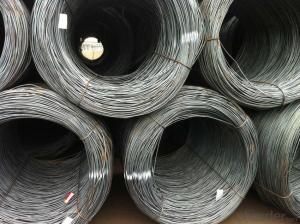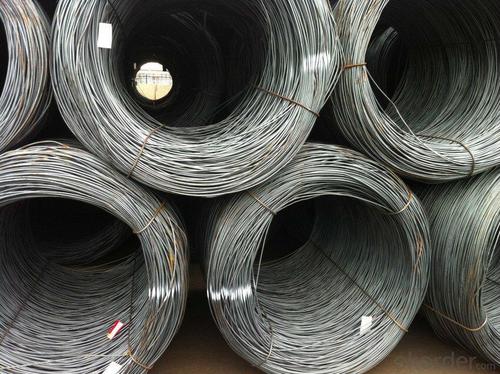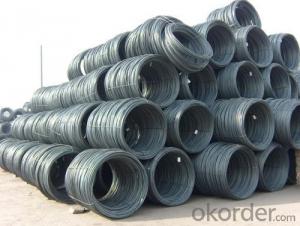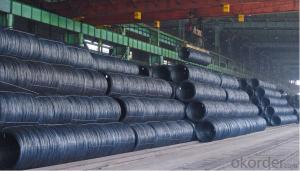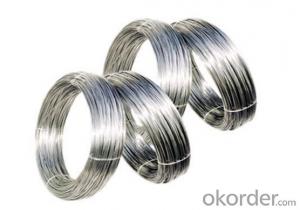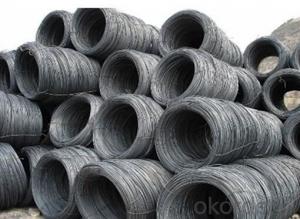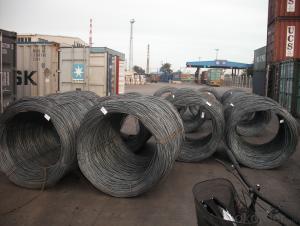Supply 8.5mm steel wire rod with competitive price
- Loading Port:
- Tianjin
- Payment Terms:
- TT OR LC
- Min Order Qty:
- 25 m.t.
- Supply Capability:
- 500000 m.t./month
OKorder Service Pledge
OKorder Financial Service
You Might Also Like
Specification
Steel Grade: Q195/235, SAE1006-1018B Standard: ASTM, GB
Diameter: 5.5mm, 6.5mm, 7mm,8mm,9mm,10mm,12mm,14mm
Type: Drawn Wire Alloy or Not: Alloy Brand Name: HSKY
Technique: Hot Rolled Place of Origin: China Mainland
Chemical Composition:(Please kindly find our chemistry of our material based on SAE1006B and SAE1008B as below for your information)
High carbon/Low carbon/common carbon Steel wire rod | With boron for rebate tax |
Grade | SAE1006B SAE1008B SAE1018B |
Package | In coil ,in bundle, |
Coil weight | about 2000kg-3000kgs |
Size: | 5.5mm 6.5mm 8mm 10mm 12mm 14mm 16mm |
Types | High Carbon ,Low carbon ,Common carbon |
Exported Country | South Korea,Vietnam,Indonesia,Myanmar,Philippines and Afrca,Ect |
Delivery term: | within 30 days after receive the LC |
Payment Term: | LC at sight ,LC 30-120 days after B/L date, TT payment |
The Standard of Physical Properties:
Grade | Chemical Composition(%) | |||||
C | Mn | Si | S | P | Cr | |
SAE1006 | 0.03~O.07 | ≤0.32 | ≤0.30 | ≤0.045 | ≤0.040 | >0.30 |
Mechanical properties | ||||||
Yield strength(N/mm2) | Tensile strength(N/mm2) | Elongation(%) | ||||
250-280 | 350-380 | ≥32 | ||||
Grade | Chemical Composition(%) | |||||
C | Mn | Si | S | P | Cr | |
SAE1008 | 0.10max | 0.3~O.50 | 0.15max | 0.050max | 0.040 max | 0.30 min |
Mechanical properties | ||||||
Yield strength(N/mm2) | Tensile strength(N/mm2) | Elongation(%) | ||||
≥195 | 315-430 | ≥30 | ||||
Usage and Applications of Steel Wire Rod in Coil:
After hot-rolled the products shaped into coil and delivery as finished product, including round, square, rectangular, hexagonal and so on, Since most of the products are round, it is generally called wire rod. Steel wire rod is widely used in construction and manufacturing. Steel wire rod is mainly used for reinforcement of reinforced concrete and welded structure or reprocessed (roberts, nail etc) materials, especially used to produce wire drawing, welding electrode, nails,spring, electronic, precise machinery parts and so on.
Packaging & Delivery of Steel Wire Rod in Coil:
Packaging Detail: products are packed in coil and then shipped by container or bulk vessel
Each coil weight: 2-3MT
Delivery Detail: within 45 days after received deposit or LC.
Label: to be specified by customer, generally, each bundle has 1-2 labels
Trade terms: CFR, CIF
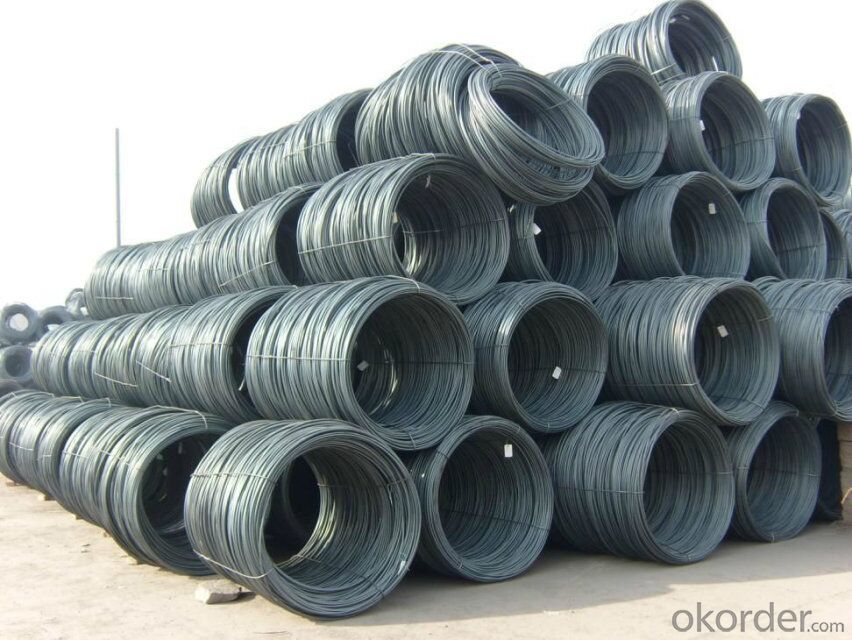
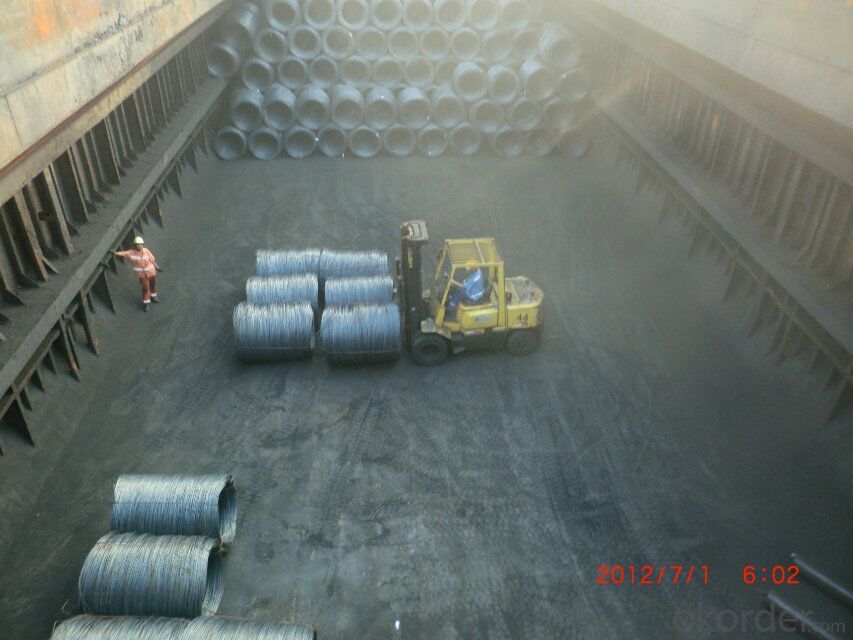
- Q: How is steel wire rod used in the production of wire mesh for filtration?
- Steel wire rod is an essential component in the production of wire mesh for filtration. It serves as the raw material for manufacturing wire mesh, which is widely used in various industries such as mining, construction, and agriculture. To produce wire mesh for filtration, the steel wire rod goes through a series of manufacturing processes. First, the wire rod is heated and then rolled into thin strands, known as wire. These wires are typically of a consistent diameter and have a smooth surface to ensure high-quality filtration. Next, the wire is woven or welded to create the desired mesh pattern. The weaving process involves interlacing the wires over and under each other, forming a stable and durable mesh structure. Alternatively, the wires can be welded at their intersections to create a more rigid mesh. The steel wire rod used in the production of wire mesh for filtration is chosen for its specific properties. Steel is known for its strength, durability, and corrosion resistance, making it suitable for demanding filtration applications. Additionally, the wire rod can be further treated to enhance its performance, such as by applying coatings to improve resistance to abrasion or chemicals. Once the wire mesh is manufactured, it is used in various filtration applications. Wire mesh filters are commonly used to separate solids from liquids or gases, removing impurities and contaminants. They are also utilized as sieves or screens to classify or separate materials based on their size or shape. In summary, steel wire rod is a crucial material in the production of wire mesh for filtration. It undergoes several manufacturing processes to create the wire mesh, which is then used in diverse filtration applications across different industries. The strength, durability, and corrosion resistance of steel make it an ideal choice for demanding filtration requirements.
- Q: What are the main factors affecting the market forecasts of steel wire rod?
- The main factors affecting the market forecasts of steel wire rod include global economic conditions, demand from end-use industries such as construction and automotive, raw material prices, government policies and regulations, technological advancements, and competition from alternative materials.
- Q: What are the different types of steel wire rod coatings used for anti-corrosion properties?
- Steel wire rod coatings are commonly used to prevent corrosion. There are various types of coatings available for this purpose. 1. Zinc Coatings: Zinc coatings, like galvanized coatings, are widely used for their anti-corrosion properties. These coatings create a protective layer of zinc on the steel wire rod surface, acting as a barrier against corrosion. Zinc coatings can be applied through hot-dip galvanizing or electroplating. 2. Aluminum Coatings: Another type of coating used for anti-corrosion is aluminum coatings. These coatings can be applied through hot-dip aluminizing or thermal spraying. They form a protective layer that prevents contact between the steel wire rod and corrosive substances. 3. Epoxy Coatings: Epoxy coatings, a type of organic coating, are commonly used for anti-corrosion purposes. They are applied as a liquid and then cured to create a hard and durable protective layer on the steel wire rod surface. Epoxy coatings offer excellent resistance against corrosion and can withstand harsh environments. 4. Polymer Coatings: Polymer coatings, such as polyethylene or polypropylene coatings, are frequently used for anti-corrosion properties. These coatings are typically applied through extrusion or powder coating. Polymer coatings provide a protective layer that is resistant to chemicals, moisture, and other corrosive elements. 5. Ceramic Coatings: Ceramic coatings are highly resistant to corrosion and wear. They are applied through thermal spraying or chemical vapor deposition. Ceramic coatings create a hard and dense layer on the steel wire rod surface, offering excellent protection against corrosion. Choosing the right coating depends on factors such as the environment, operating conditions, and desired level of corrosion resistance. Each type of coating has its own advantages and limitations, so it is crucial to select the most suitable one for long-term anti-corrosion protection of the steel wire rod.
- Q: What are the common quality control measures for steel wire rod?
- Some common quality control measures for steel wire rod include conducting visual inspections for defects such as surface cracks or imperfections, performing dimensional checks to ensure the rod meets specified size and shape requirements, conducting mechanical tests to evaluate its strength and durability, and conducting chemical analysis to verify the composition and purity of the steel. Additionally, quality control measures may involve conducting non-destructive testing techniques such as ultrasonic testing or magnetic particle inspection to identify any internal flaws or defects that may affect the performance of the wire rod.
- Q: What are the disadvantages of using steel wire rod?
- Some disadvantages of using steel wire rod include its susceptibility to corrosion and rusting, its relatively high cost compared to other materials, and its limited flexibility and elasticity compared to other types of wire. Additionally, steel wire rod can be heavy and difficult to handle, making it less suitable for certain applications that require lightweight or flexible wire.
- Q: What are the advantages of using steel wire rod compared to other materials?
- There are several advantages of using steel wire rod compared to other materials. Firstly, steel wire rod offers high strength and durability, making it suitable for various applications where a strong material is required. Secondly, steel wire rod has excellent flexibility, allowing it to be easily bent or shaped without breaking, which makes it ideal for applications that require flexibility, such as in construction or manufacturing. Additionally, steel wire rod has good corrosion resistance, ensuring its longevity and suitability for outdoor or corrosive environments. Lastly, steel wire rod is widely available and cost-effective, making it a cost-efficient choice for many industries.
- Q: What are the main factors affecting the market advertising of steel wire rod?
- The main factors affecting the market advertising of steel wire rod include the demand and supply dynamics of the industry, the competitive landscape, technological advancements in manufacturing processes, changes in customer preferences and buying behavior, economic conditions and trends, government regulations and policies, and the overall marketing strategies and budgets of steel wire rod manufacturers and distributors.
- Q: What are the common industry competencies for steel wire rod professionals?
- Some common industry competencies for steel wire rod professionals include knowledge of steel production processes, understanding of quality control and testing procedures, proficiency in operating and maintaining machinery and equipment, familiarity with industry safety regulations, ability to interpret and analyze technical data and specifications, and effective communication and teamwork skills.
- Q: What are the different types of steel wire rod surface defects?
- There are several types of steel wire rod surface defects, including scale, pits, scratches, rust, cracks, and uneven surfaces.
- Q: What are the different types of steel wire rod surface cleaning methods for wire galvanizing?
- There are several different types of steel wire rod surface cleaning methods for wire galvanizing. These include mechanical cleaning methods such as brushing or shot blasting, chemical cleaning methods such as pickling or acid cleaning, and electrolytic cleaning methods. Each method has its advantages and is chosen based on the specific requirements and conditions of the galvanizing process.
Send your message to us
Supply 8.5mm steel wire rod with competitive price
- Loading Port:
- Tianjin
- Payment Terms:
- TT OR LC
- Min Order Qty:
- 25 m.t.
- Supply Capability:
- 500000 m.t./month
OKorder Service Pledge
OKorder Financial Service
Similar products
Hot products
Hot Searches
Related keywords
